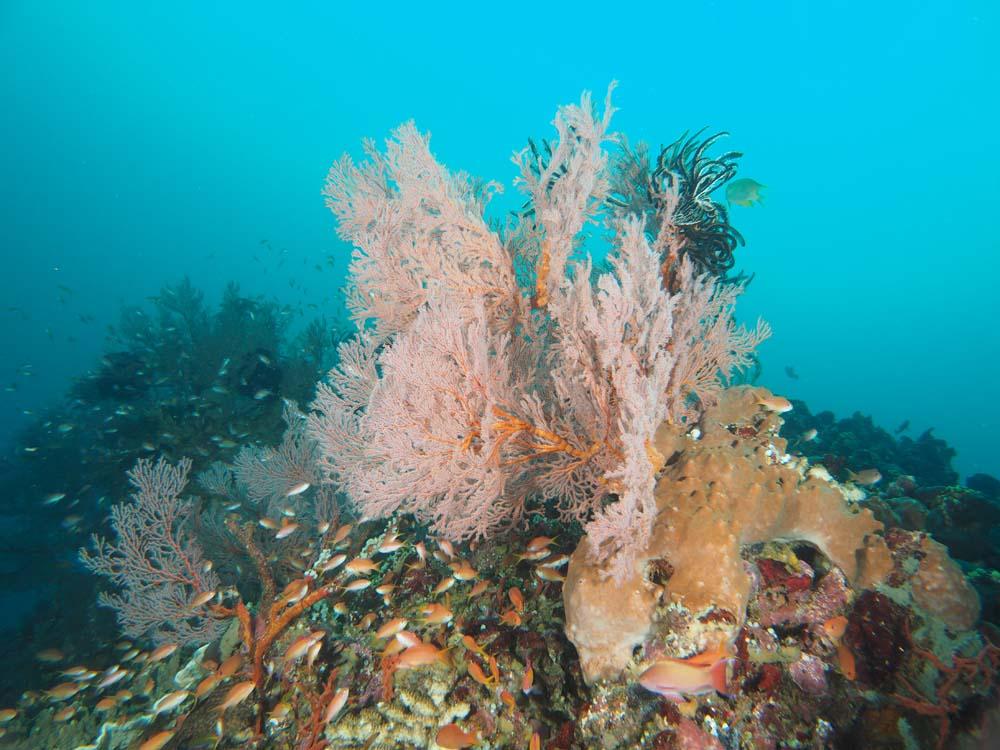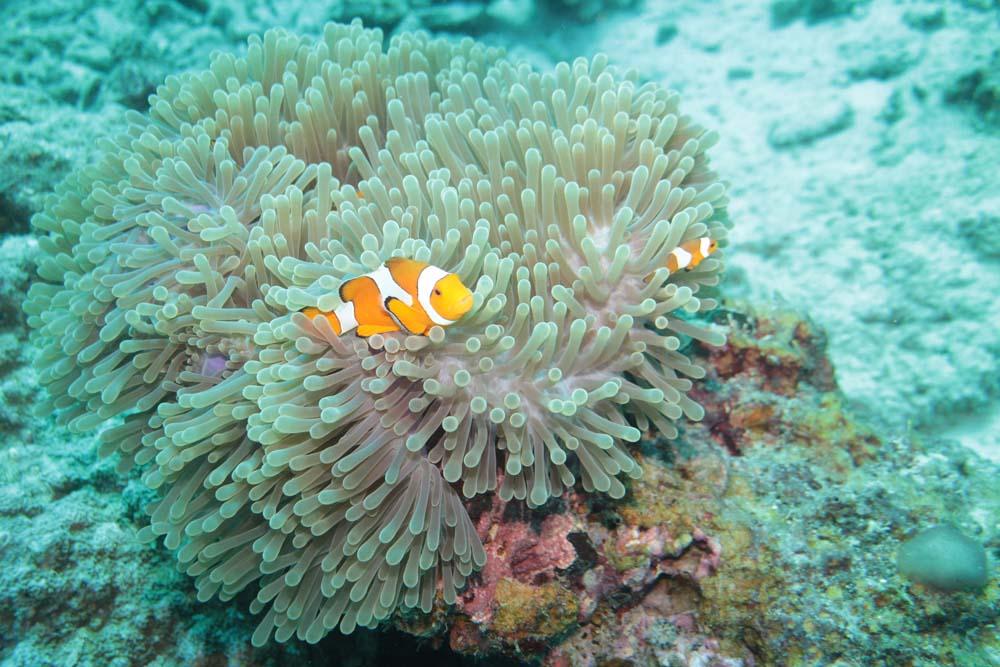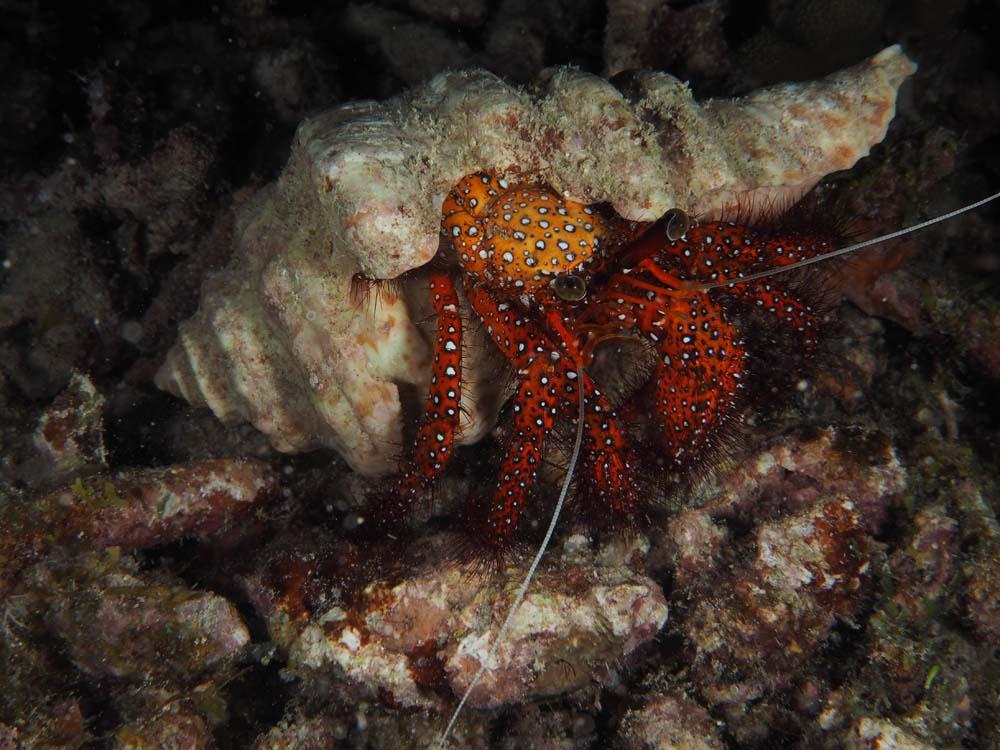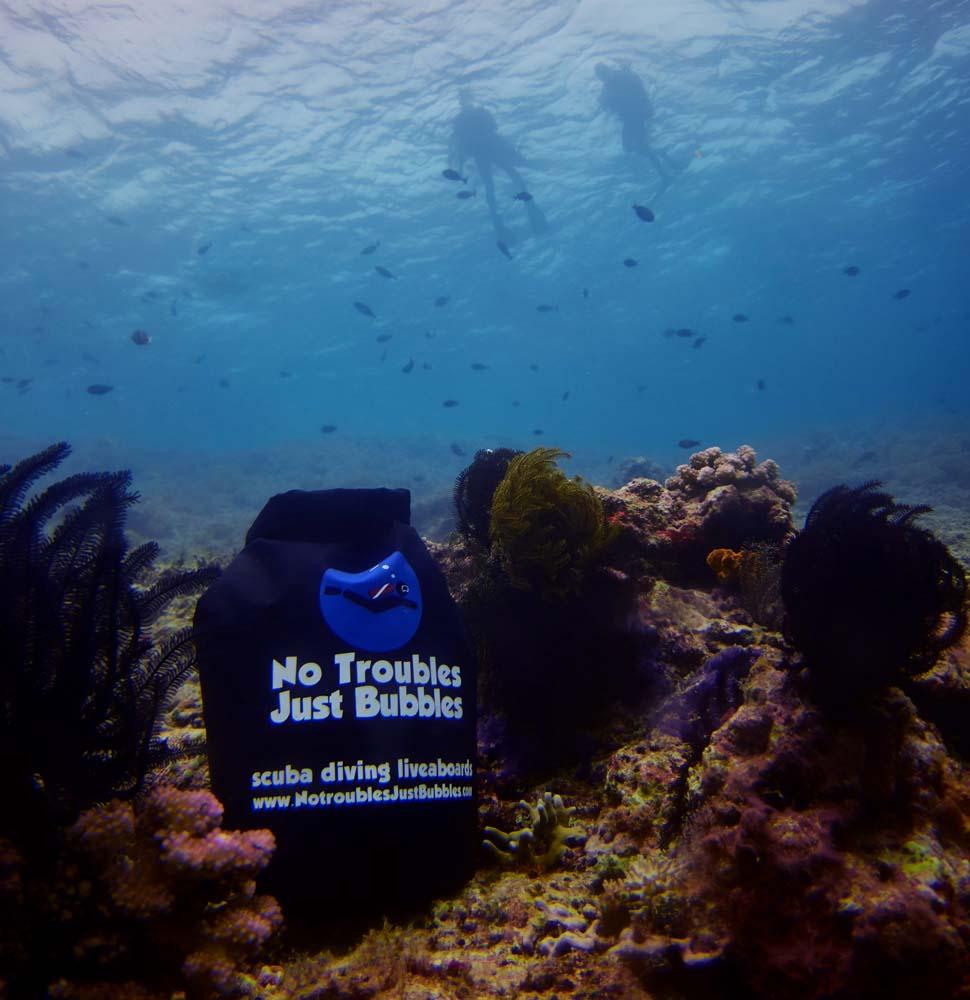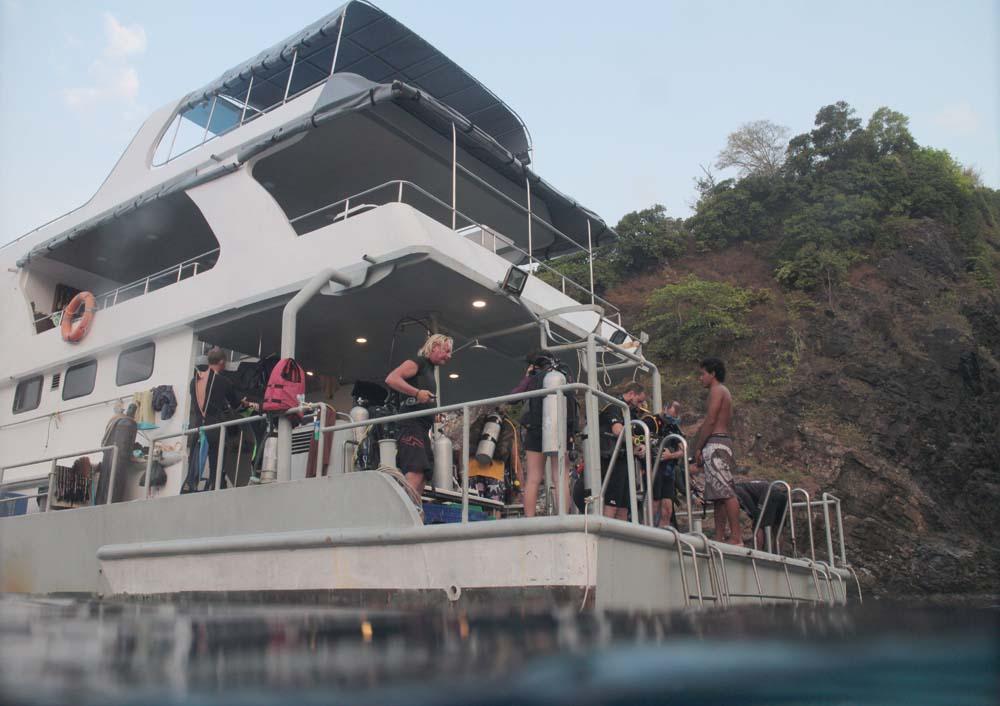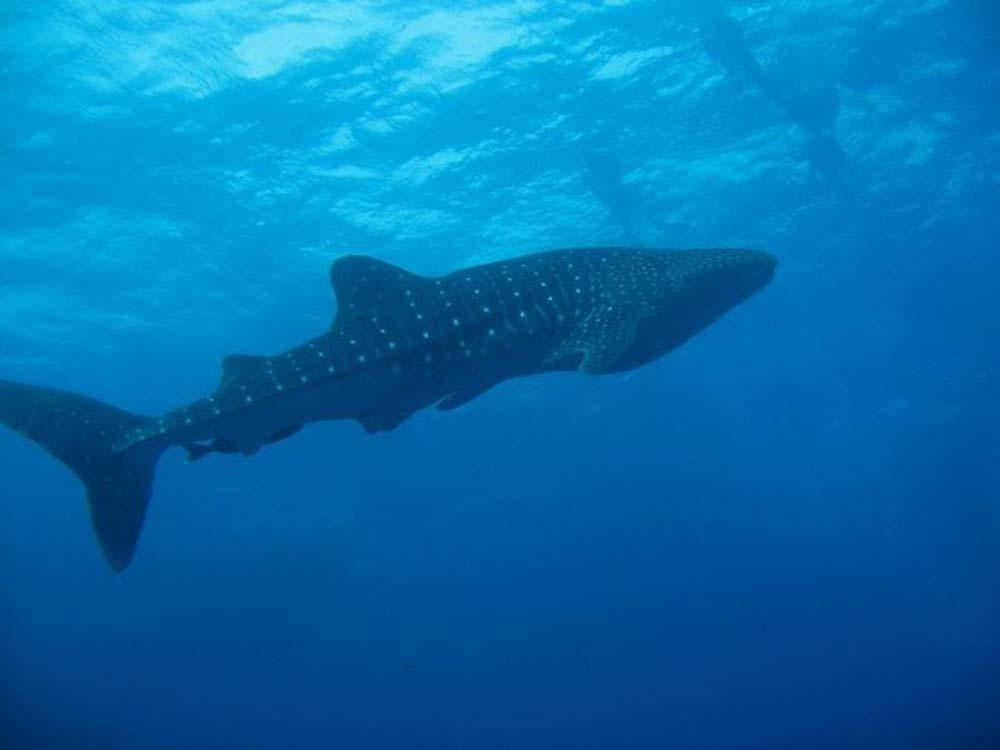
Thailand is one of the most-popular destinations in the world for scuba diving. There are plenty of reasons for this, which include the climate, dive sites, low costs, year-round diving for all levels, and other factors. For example, many non-diving activities can be enjoyed in Thailand, as well as wonderful food, friendly locals, shopping and more. From the mountainous north, though Bangkok’s shops, bars and hotels, to the islands and beaches of the south, Thailand is a top holiday destination all year round. Scuba diving in Thailand can be enjoyed on the East Coast, in The Gulf of Thailand, as well as the West Coast, in The Andaman Sea. More people get their Open Water certification on Koh Tao, than almost anywhere else in the world. Koh Tao is in The Gulf, but Thailand’s best diving locations are not far away on the West Coast. The best diving in Thailand is at The Similan Islands.
Similan Island Day Trip or Liveaboard?
To answer this question, each person has to look at several unique & personal considerations. While some people are happy to make sacrifices in order to maximise the number of dives and cost per dive, others need the comfort of a hotel at night or can’t spend too long at sea. To check if you are suitable for a diving liveaboard Thailand is probably the best place to check.
The cost of diving on a Similan liveaboard compared to day trips is difficult to compare fairly. In total, a liveaboard cruise is much more expensive, but it’s not as simple as that. After you calculate the cost of a hotel, meals, national park fees and how many dives you get on a day trip, a liveaboard cruise is all of a sudden excellent value. Several nights’ accommodation and all meals included brings the real cost right down, and you get up to four dives every day.
Some people don’t like boats, and the thought of sleeping on one fills them with dread. However, Similan diving day trips require 90 minutes travel by speedboat each way. That’s 3 hours per day! The liveaboard boats are so large that guests often don’t notice that they’re moving. Many boats’ cabins have private bathrooms and all have air conditioning. These modern purpose-built ships are much more comfortable than many people assume.
Day trips arrive at the Similan Islands or surrounding dive sites around 9.30am, with divers rarely getting in the water before 10am. Then they leave at around 3.30pm. Liveaboard Thailand boats stay at sea and the guests on board can enjoy wonderful sunrise, sunset and night dives. This is especially good when there aren’t as many other boats or divers in the water.
In our opinion, for a scuba diving liveaboard Thailand is among the best countries in the world, and especially so at The Similan Islands. Therefore, we always recommend joining a liveaboard trip when compared to a day trip. However, this only applies to the West Coast (Andaman Sea), such as The Similan Islands, Richelieu Rock and the southern route of Hin Daeng & Koh Haa. Divers who plan to dive at Koh Phi Phi, Phuket’s dive sites, or anywhere in The Gulf of Thailand will normally do so on a day trip.
Thailand’s Diving Areas
There are two coasts on Thailand, both of which are in the south of the country. The East Coast is home to Koh Tao, Koh Samui, Koh Pha Ngan, Koh Chang, Pattaya and Koh Losin. The Gulf of Thailand is connected to The South China Sea, and due to the limited bay opening, water tends to circulate within The Gulf instead of escape. This tends to have an effect on the clarity of the water and some marine life species. In contrast, Thailand’s West Coast is part of The Andaman Sea, which is connected to The Indian Ocean. Therefore, the water is able to be cleaned by ocean currents. And these currents bring food for the reefs, as well as large pelagic sharks, rays and more.
In general, the east coast has more easy dive sites than difficult ones, and these dive sites tend to be shallower and with unpredictable visibility/clarity. The cost of diving is generally lower on the east coast compared to the west, especially doing the Open Water Course on Koh Tao. Although there are some very easy dive sites on the west coast of Thailand, the ratio of ‘exciting & challenging’ dive sites is higher than on the east coast. Below is a brief description of most diving areas in Thailand, and their location (Gulf/East Coast or Andaman/West Coast)
Koh Tao (Gulf) is world famous for the best place to ‘do your PADI’ at backpacker prices. The diving is good in warm water, and there are so many dive shops on Koh Tao that competition for your business is fierce. Most dive sites are so near to the island that single-dive boat trips are possible. Further away are Chumpon Pinnacle, Sail Rock and SouthWest Pinnacle. These three dive sites are the best in The Gulf of Thailand.
Koh Phi Phi (Andaman) has at least half a dozen good dive sites, as well as a new wreck. Visibility is good, and so is marine life. Most dives are two-dive day trips. Most dive shops on Phi Phi fix prices, and these prices are almost double that of Koh Tao, although the experience is quite different. Koh Lanta dive centres often visit Koh Phi Phi for diving day trips. Short liveaboard cruises are available from May to October.
Phuket (Andaman) has some excellent dive sites, although they can become crowded in the high season. King Cruiser Wreck, Shark Point, Anemone Reef and Koh Doc Mai are all very near to each other and not far from Phuket’s east coast. The Racha Islands are to the south and also have some excellent dive sites. Most trips are day trips, but short liveaboard cruises are available all year.
Hin Daeng/Muang (Andaman/National Marine Park) are twin submerged pinnacles southeast of Phuket. They are not for inexperienced divers, due to potential currents, depth and them being in open sea far from land. Ideally they are better enjoyed on a short liveaboard cruise, but day trips are also possible.
Koh Haa (Andaman/National Marine Park) is a small group of five uninhabited islands south of Phi Phi / Lanta. The diving here is world class, and for all levels of scuba diver. Day trips are possible from Koh Lanta, and some liveaboard boats visit as well.
Similan Islands (Andaman/National Marine Park) are a small set of uninhabited islands to the west of Thailand’s mainland. Khao Lak, Phang Nga is the nearest point of land. There are twenty or more dive sites for all levels of scuba diver. Snorkellers and other beach lovers come to two of the islands’ pristine beaches. Due to the distance (60km.) from the mainland, day trips are long and quite expensive. It’s better to join a liveaboard diving cruise to the Similan Islands.
Koh Bon & Koh Tachai (Andaman/National Marine Park) are two islands northeast of The Similans. Koh Bon is a limestone island that has lots of exciting marine life, including Manta Rays. New divers can enjoy Koh Bon, but it’s better for divers with 20+ dives. Koh Tachai is a little further north and a granite island with a pristine beach (currently closed). Diving here is a little more extreme, mainly due to the unpredictable and sometimes strong currents. Day trips are possible, but liveaboard diving at these two locations is recommended.
Richelieu Rock (Andaman/National Marine Park) is Thailand’s premier dive site. It’s easy to dive Richelieu up to four times in one day and still not be bored. Marine life is attracted from all around and this includes Whale Sharks. The soft corals and smaller species are there all the time and make every dive an excellent one. Day trips are possible on days when there is no wind or waves, but diving Richelieu Rock is much better from a liveaboard.
Surin Islands (Andaman/National Marine Park) are uninhabited islands near to the border of Myanmar. The dive sites are shallower than at the Similans, and further away from the mainland. Therefore, they’re not as popular. However, some people know that the Surin Islands have some wonderful dive sites with lots of very healthy corals. They like to keep this fact a secret.
Koh Lipe (Andaman) is near the border of Malaysia in the south of Thailand. There are more than a dozen excellent dive sites around Koh Lipe, but not many liveaboard boats visit. Therefore, the few dive centres on the island are the only ones who dive there on day trips and single dive trips.
Pattaya (Gulf) is near to Bangkok and therefore the water is not very clear or deep. Diving in Pattaya is not very popular except for people who are limited in the time they have to travel.
Koh Samui & Koh Pha Ngan (Gulf) don’t have many of their own decent dive sites. Therefore, most dive centres take guests on long day trips to the best dive sites around Koh Tao. Unless you have a good reason to stay on Koh Samui or Pha Ngan, for diving it’s easier and cheaper to stay on Koh Tao.
Koh Losin (Gulf) is a remote uninhabited island in the deep south of Thailand’s east coast. The diving is good, but there are only one or two dive sites, and no option for visiting on a day trip. Therefore, one or two liveaboard boats visit Koh Losin when the west coast is in its low season.
Myanmar/Burma Mergui Archipelago (Andaman/National Marine Park) is not in Thailand, but nearly all liveaboards to Myanmar start in Khao Lak or Ranong on Thailand’s west coast. Some people claim that because this area wasn’t open to the diving public until recently that the conditions underwater are untouched. Others disagree, citing that destructive fishing methods have been practised in Mergui. It’s fair to say that the truth is in the middle. Dynamite and cyanide fishing has taken place there, but not anymore. The diving is excellent, and there are very few other boats out there. But the cost and commitment to a longer cruise put some people off. It’s only possible to dive in Burma on a liveaboard trip.
The Best Time to Visit & Dive in Thailand
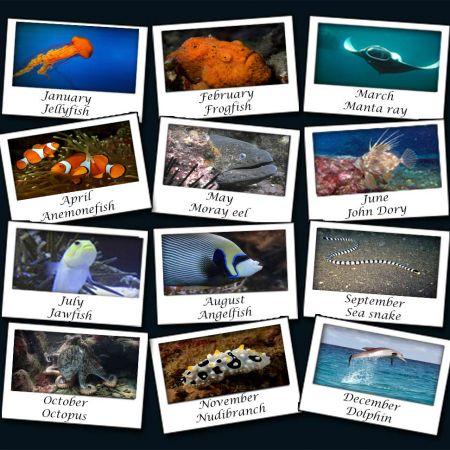 Visiting Thailand is possible all year round. The weather is always hot, sometimes very hot, and sometimes wet. The three seasons are November-February, March-June & July-October.
Visiting Thailand is possible all year round. The weather is always hot, sometimes very hot, and sometimes wet. The three seasons are November-February, March-June & July-October.
High Season : November to February is the best time to visit Thailand. Not just because this is the cold winter of Europe and North America, but because the weather in Thailand is at its best. There is little wind or rain, and most days are hot & sunny.
Hot Season : March to June is the hottest period, with winds and rain at times. Thai New Year is in April, and the large pelagic species (Manta Rays & Whale Sharks) are more commonly seen at Koh Bon, Koh Tachai and Richelieu Rock in March and April.
Rainy Season : July to October is the rainy season, but that doesn’t mean it’s raining all the time. There may be a shower almost every day, but the rain falls heavily and then stops suddenly. The humid climate ensures that anything that got wet will soon dry out. Diving in National Marine Parks isn’t possible in the rainy season, but all other areas stay open all year round.
Although the weather above the surface is different depending on the season, the effects under the sea are minimal. Wind and waves make no difference to the fish. Scuba divers may experience less colour underwater due to less sunlight, but that’s it. However, travelling and staying on a boat are less enjoyable when the weather or sea conditions are rough.
The National Marine Parks in Thailand are closed from the middle of May to the middle of October every year. The main reason for this is that the unpredictable and strong winds cause waves that may be dangerous for boats. It’s also not fair to expect the coastguards to come out to rescue a stricken boat in rough conditions. Another reason is to allow the natural ecosystems to recover from seven months’ of visitors. Therefore, for five months of the year all of the National Marine Parks are closed to the public. This includes, Similans, Surin & Koh Haa (inc. Hin Daeng/Muang).
Learning to Dive in Thailand
 It’s possible to learn to dive at almost any of Thailand’s many dive destinations. Some particular dive sites are not suitable for learning to dive, but are ok for inexperienced divers. These include Richelieu Rock, Koh Tachai, Hin Daeng/Muang, Chumpon Pinnacle and Sail Rock.
It’s possible to learn to dive at almost any of Thailand’s many dive destinations. Some particular dive sites are not suitable for learning to dive, but are ok for inexperienced divers. These include Richelieu Rock, Koh Tachai, Hin Daeng/Muang, Chumpon Pinnacle and Sail Rock.
Most people learn to dive in Thailand at Koh Tao, simply due to the low cost and many good dive sites. Koh Phi Phi, Koh Lanta & Phuket are more expensive to learn to dive at, but the quality of the experience is considered to be better. This mainly applies to how many diving students are taught in each group and the experience of the instructor.
Sea Conditions
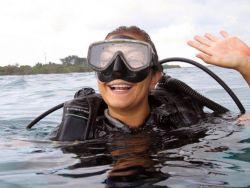 The sea temperature in Thailand changes very little during the year. 27-28°C is average. Sometimes a dive computer can register 30°C or as low as 26°C, but this is not common. Contrary to some people’s opinions, currents are not affected by the weather or waves. They are controlled by the tides and the oceans. Sometimes, divers may experience a short-term current, but this is often a thermocline or surge.
The sea temperature in Thailand changes very little during the year. 27-28°C is average. Sometimes a dive computer can register 30°C or as low as 26°C, but this is not common. Contrary to some people’s opinions, currents are not affected by the weather or waves. They are controlled by the tides and the oceans. Sometimes, divers may experience a short-term current, but this is often a thermocline or surge.
Visibility is affected by currents and local human activity. The natural currents of the sea may bring plankton, which is food for most pelagic & reef species. Areas near to human developments or industry are also affected due to pollution. This is made worse when the sea is unable to flush itself clean, such as in a bay or gulf. In general, the west coast of Thailand has clearer water than The Gulf. But there are days when the conditions are opposite.
Things To know
Thai people are very friendly and hospitable. They are also very generous to offer to share their food to passing strangers. The country has very little unprovoked violent crime, especially towards tourists. However, it’s important not to ‘cause loss of face’ to Thai people. They take this very personally, and sometimes too far. For example, a disagreement when driving on the road or passing in the street can quickly escalate if not handled sensibly.
Using the roads in Thailand requires care, patience and awareness at all times.
Thai people respect their elders and their royal family. Therefore, visitors to Thailand should never show disrespect to them.
Spiritually, the feet are the lowest parts of the body and the head the highest. Using your feet to point is unacceptable, as is passing anything over another person’s head.
It is a serious crime to put your foot on Thai money, even to stop a bank note blowing away in the wind.


